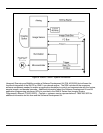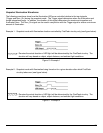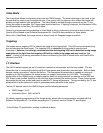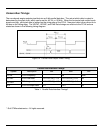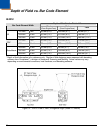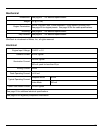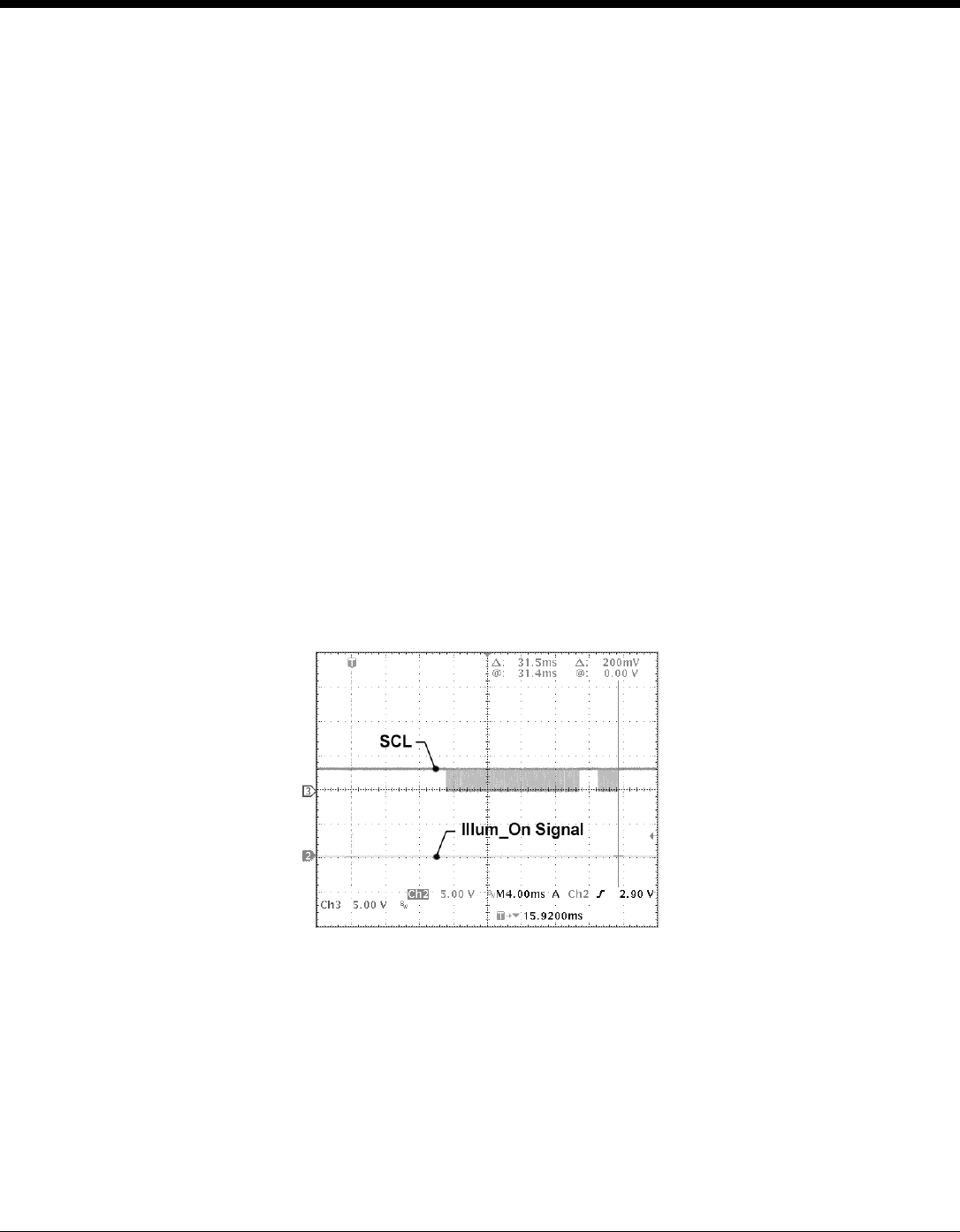
18
Wake Up Timing
When exiting sleep mode the engine will require a minimum wake up time before an image can be acquired.
Wake up is initiated by pulsing the Illum_On pin for a minimum of 250 µS. The pulsing wakes up the on board
microcontroller and oscillator. After this pulse is brought low, an additional 10 mS delay is required to ensure
that the oscillator has stabilized. After the additional 10 mS delay, the oscillator is stabilized and the imager is
ready to receive its configuration via the I
2
C control bus.
During sleep, the imager looses all configuration settings therefore all applicable settings will need to be
updated. The total time for the device to wake up will be dependant on how many registers need to be
reconfigured, the running speed of the I
2
C bus, and the manner in which the data is transmitted on the bus
(i.e. repeated stop vs. no repeat stop transmission).
Wake up time calculation:
T
wake up
= Oscillator Stabilization Time + Illum_On pulse width + Configuration Time
= 10 mS + 250 µS + Configuration Time
= 10.25 mS + Configuration Time
Example: The following waveform illustrates the wake up time measured from the rising edge of the Illum_On
signal to the last byte of configuration data sent on the I
2
C bus (labeled as SCL). The example
below is for a host system running the I
2
C at 100kHz and transmitting data using no repeat stop.
In this example, 27 registers are configured. The total wake up time under the example conditions
is approximately 31.5 mS.
Figure 13. Example of wake up timing with I
2
C running at 100 kHz






